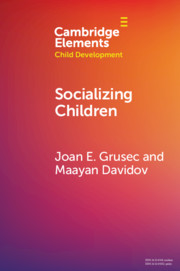Element contents
Socializing Children
Published online by Cambridge University Press: 30 April 2021
Summary
- Type
- Element
- Information
- Series: Elements in Child DevelopmentOnline ISBN: 9781108920780Publisher: Cambridge University PressPrint publication: 27 May 2021
References
- 13
- Cited by



